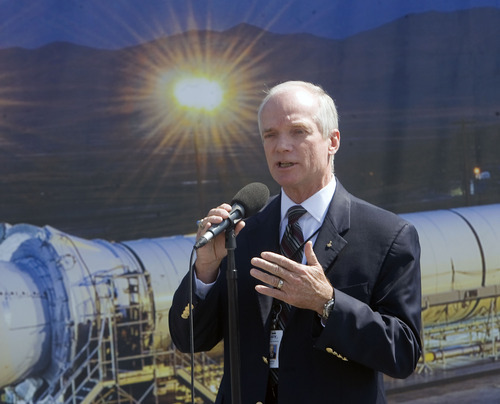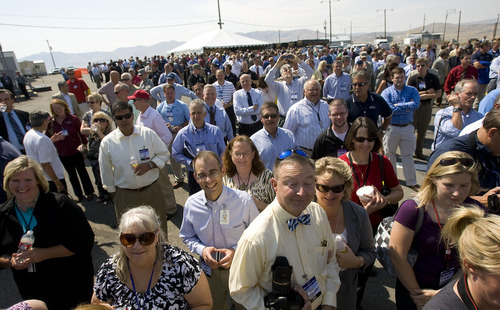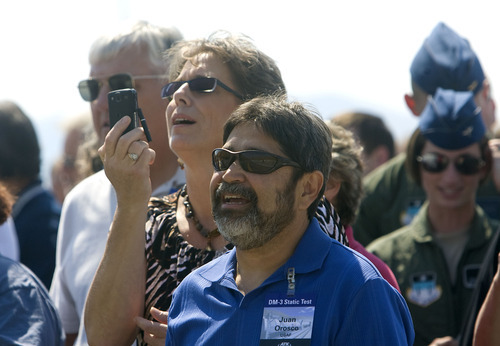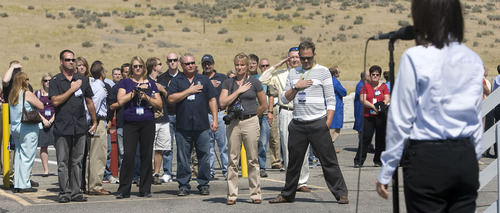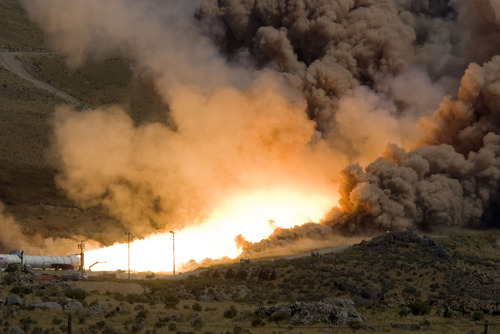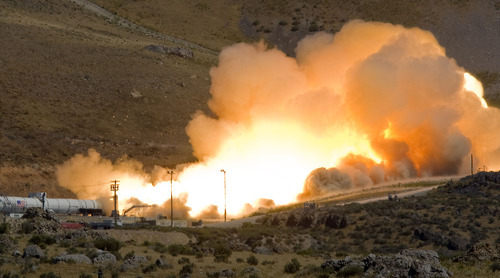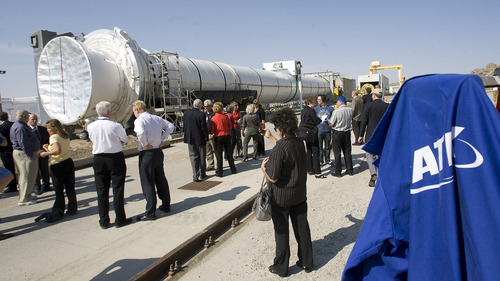This is an archived article that was published on sltrib.com in 2011, and information in the article may be outdated. It is provided only for personal research purposes and may not be reprinted.
Although it remains unclear whether the 5-segment rocket motor ATK is developing for NASA will ever fly, at least the company can say it is making progress toward that goal.
ATK, the company that is perhaps best known for building the four-segment rocket booster motors used on the recently ended space shuttle program, successfully test fired the 5-segment design Thursday at its Promontory plant west of Brigham City.
The motor burned for a little more than two minutes, generating 3.6 million pounds of thrust and sending a cloud of dust and exhaust hundreds of feet into the air.
"We still don't know for sure" if NASA will use ATK's motor for the country's next space launch system, said Charlie Precourt, vice president and general manager of ATK's space launch systems. "But we have heard there is some interest in using it for some future test flights."
The event Thursday was the third ground test of the company's five-segment motor design that draws upon ATK's earlier experience building booster motors for the space shuttle program.
ATK began working on the new design several years ago with the idea that it could be used for NASA's Constellation program and propel the nation's next generation of manned flight vehicles into space.
The Constellation program was subsequently canceled but ATK was able to continue to develop the rocket motor under existing contracts.
"There are a number of elements from ATK's earlier work that may be highly transferable to whatever NASA wants to do next," said Dan Kanigan, a NASA spokesman.
Former astronaut Kent Rominger, who serves as vice president of strategic and business development for ATK, said Congress already has provided NASA with authorization to proceed with the development of a heavy-lift vehicle. Such a vehicle would use two of the ATK motors and be able to put a minimum of 130 metric tons of cargo into orbit — enough to go to Mars, an asteroid or back to the moon.
Still, there is no development time table in place, nor has NASA even settled on a future design. There also has been no date set for any future flight test of the ATK motor.
"We don't have another five-segment motor assembled but we do have all the hardware on hand to build one," said ATK spokesman George Torres.
Twitter: @OberbeckBiz


